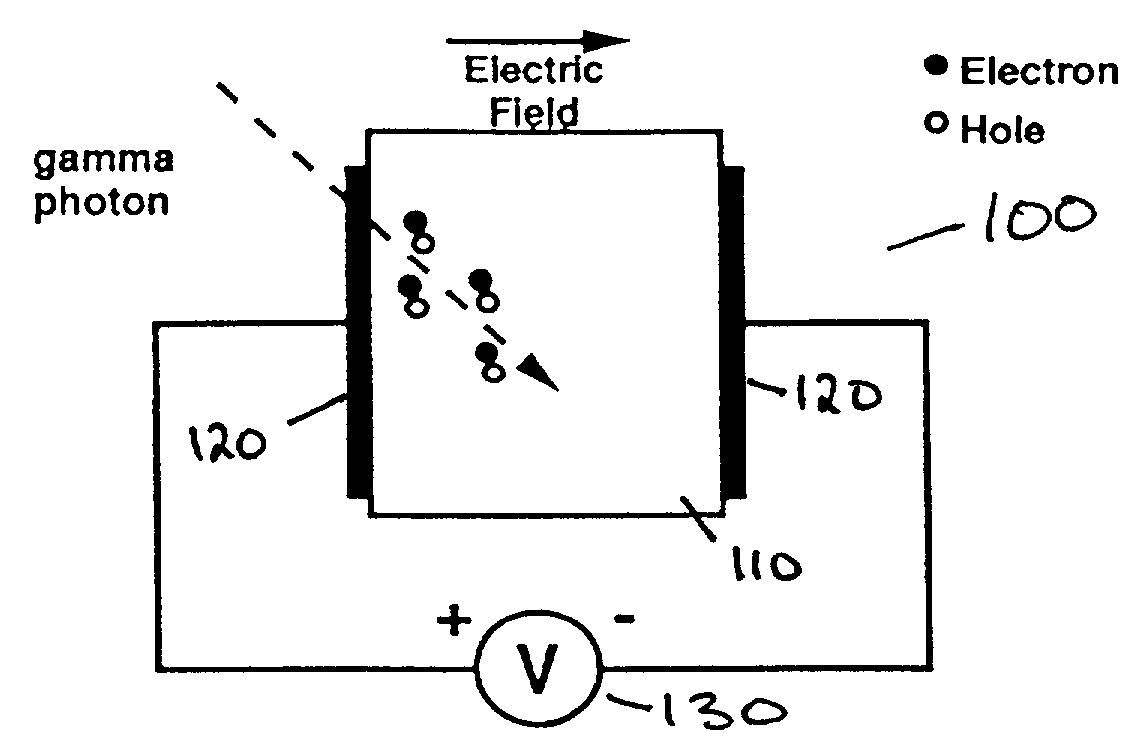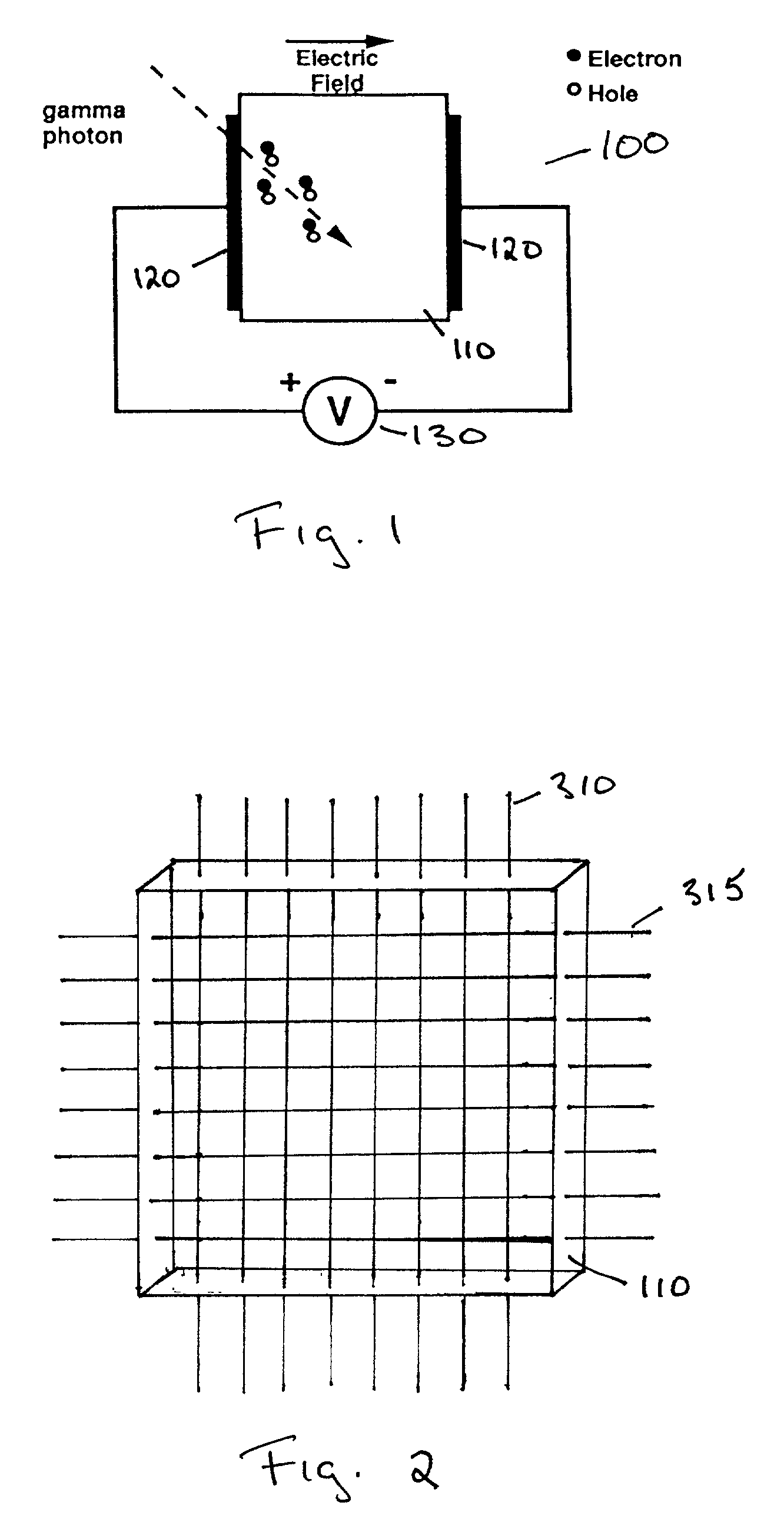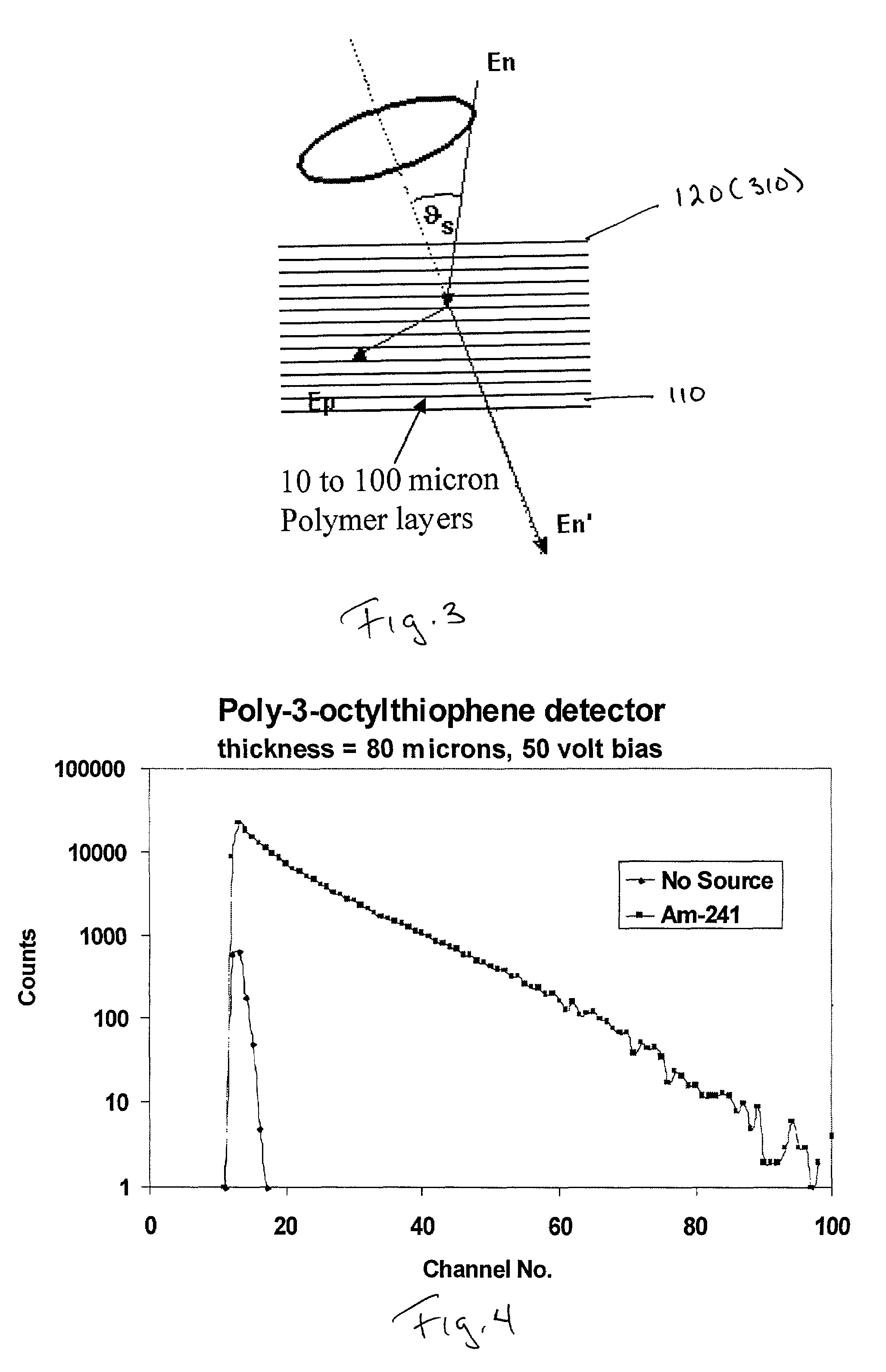Organic materials and devices for detecting ionizing radiation
a technology of organic materials and devices, applied in the field of organic semiconductor materials, can solve the problems of unattractive candidates for room temperature radiation detection devices, significant limitations on the use of organic materials in many applications, and the need to keep such si(li) and ge detectors cooled to cryogenic temperatures, etc., and achieve the effect of high radiation specificity
- Summary
- Abstract
- Description
- Claims
- Application Information
AI Technical Summary
Benefits of technology
Problems solved by technology
Method used
Image
Examples
example
[0040]An electrode was prepared by sputtering a 1 μm thick metal film onto a glass substrate. An amount of poly(3-octylthiophene) was dissolved in either toluene or chloroform to form a 10 vol % solution. An inert polymer, such as polystyrene or poly(methyl methacrylate), can be added to the solution (about 10% of the amount of poly(3-octylthiophene)) to improve the mechanical properties of the dried polymer. The solution as spin cast at about 500 RPM onto the electrode surface to form a film about 25 μm to about 100 μm thick and the electrode / polymer composite was baked below 100° C. to remove the solvent. A second electrode was sputtered onto the surface of the organic polymer film to form a radiation detector device. A power supply was attached to the radiation detector structure and a measurement of the device response to alpha radiation was made.
[0041]A detector device prepared as in the example above was exposed to alpha radiation from an Am241 source and response of the detec...
PUM
 Login to View More
Login to View More Abstract
Description
Claims
Application Information
 Login to View More
Login to View More - R&D
- Intellectual Property
- Life Sciences
- Materials
- Tech Scout
- Unparalleled Data Quality
- Higher Quality Content
- 60% Fewer Hallucinations
Browse by: Latest US Patents, China's latest patents, Technical Efficacy Thesaurus, Application Domain, Technology Topic, Popular Technical Reports.
© 2025 PatSnap. All rights reserved.Legal|Privacy policy|Modern Slavery Act Transparency Statement|Sitemap|About US| Contact US: help@patsnap.com



